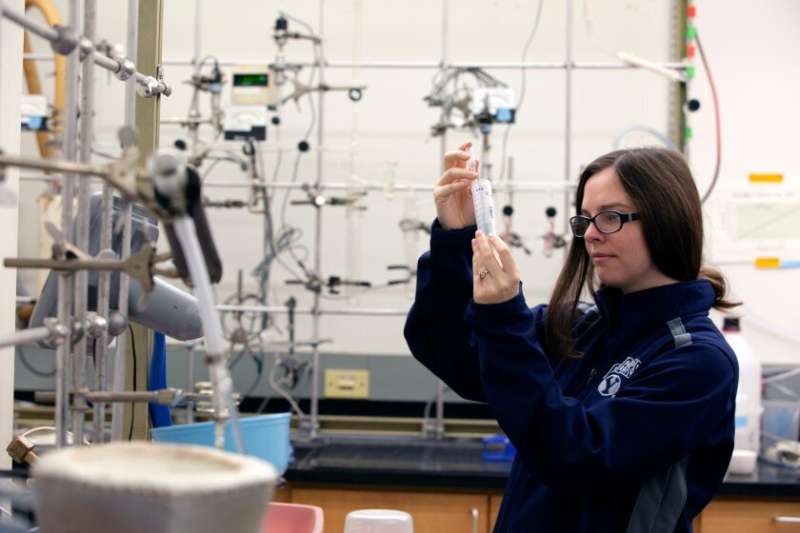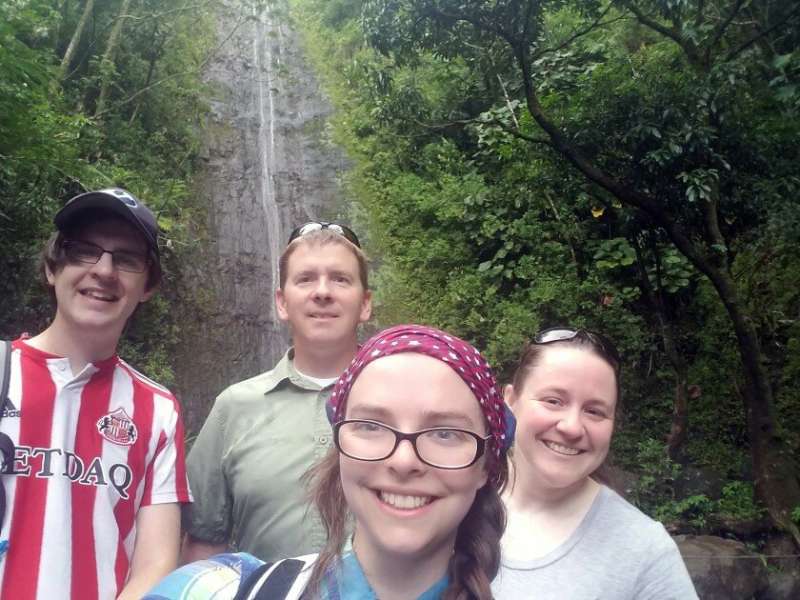Hawaiian minerals increasing lung infection rates on the islands, study finds

If you have severe asthma, underlying pulmonary conditions or are immunocompromised, Hawaii's atmosphere may not be the place for you.
The Aloha State is home to 10 of the 14 climate zones and boasts a very diverse ecosystem. Something about the environment, though, seems to have a significant effect on the prevalence of pulmonary disease.
There is a group of bacteria called nontuberculous mycobacteria, or NTM, that causes opportunistic pulmonary disease—especially in people who have compromised immune systems or other underlying conditions. The infection rate of this bacteria is over four times higher in Hawaii than on the mainland.
Geologists from BYU and microbiologists from National Jewish Health in Denver, the leading respiratory hospital in the United States, teamed up to find out why NTM seems to thrive in Hawaii. Their research was just published in Applied and Environmental Microbiology.
After examining the composition of Hawaiian soil, they were able to identify individual clay, iron and manganese minerals associated with NTM.
Jennifer Honda, a professor at National Jewish Health, was born and raised in Hawaii and teamed up with Dr. Nelson to help understand how NTM is getting into homes and infecting at-risk individuals.
"People have reported that bacteria is in the soil and environment," explained Honda, "but no one had gone in and chemically analyzed the soil for what minerals and components could be contributing to the environment. These findings help us understand the environmental drivers of NTM and how they contribute to pulmonary disease."
Dr. Steve Nelson, a BYU geology professor and co-author of the research paper, and his research students first analyzed over 600 soil samples to find what minerals were present in the soil. Once the pure minerals were identified, they were sent to National Jewish Health where microbiologists cultured the minerals to see if the NTM bacteria would bind to it.
Once the culturing experiment was finished and soil characteristic statistics were taken, BYU took the minerals back and used a scanning electron microscope to take images of the minerals. At the microscopic level, they were able to identify which minerals NTM binds to and which minerals inhibited the growth of the bacteria.
Leeza Wells, a current BYU graduate student, has been working on this project for over three years and did the majority of the lab work with the soils and minerals.
"One big finding is that the mineral hematite seems to be a main factor in NTM presence and transportation because NTM binds to hematite material," Wells said. This is significant because hematite is a very common soil material in Hawaii, one that causes the dirt to be red.

These findings have broader implications as well due to the fact that many developing countries have similar tropical characteristics.
"Ultimately, it's a public health concern," Nelson said. "The goal is to try to understand where this bacteria lives in the environment and therefore who might be at risk."
To continue the project, Wells will be going into homes in Hawaii to test the water and soils to see what the differences are between the homes that tested positive for NTM and those that did not.
"We are finally figuring out enough to where we can go to the homes and see what is causing some to be more susceptible," Wells said. "If we can figure out what that is, whether it is something in the water or the aquifer that it's coming from, then we can tell individuals in Hawaii and figure out how to prevent it."
More information: Cody M. Glickman et al. Assessment of Soil Features on the Growth of Environmental Nontuberculous Mycobacterial Isolates from Hawai'i, Applied and Environmental Microbiology (2020). DOI: 10.1128/AEM.00121-20
Journal information: Applied and Environmental Microbiology
Provided by Brigham Young University




















